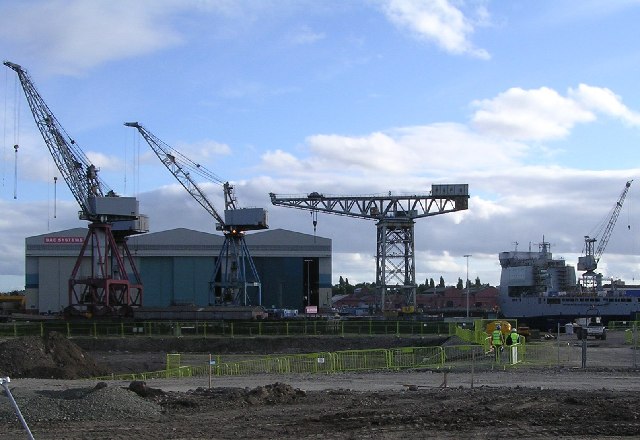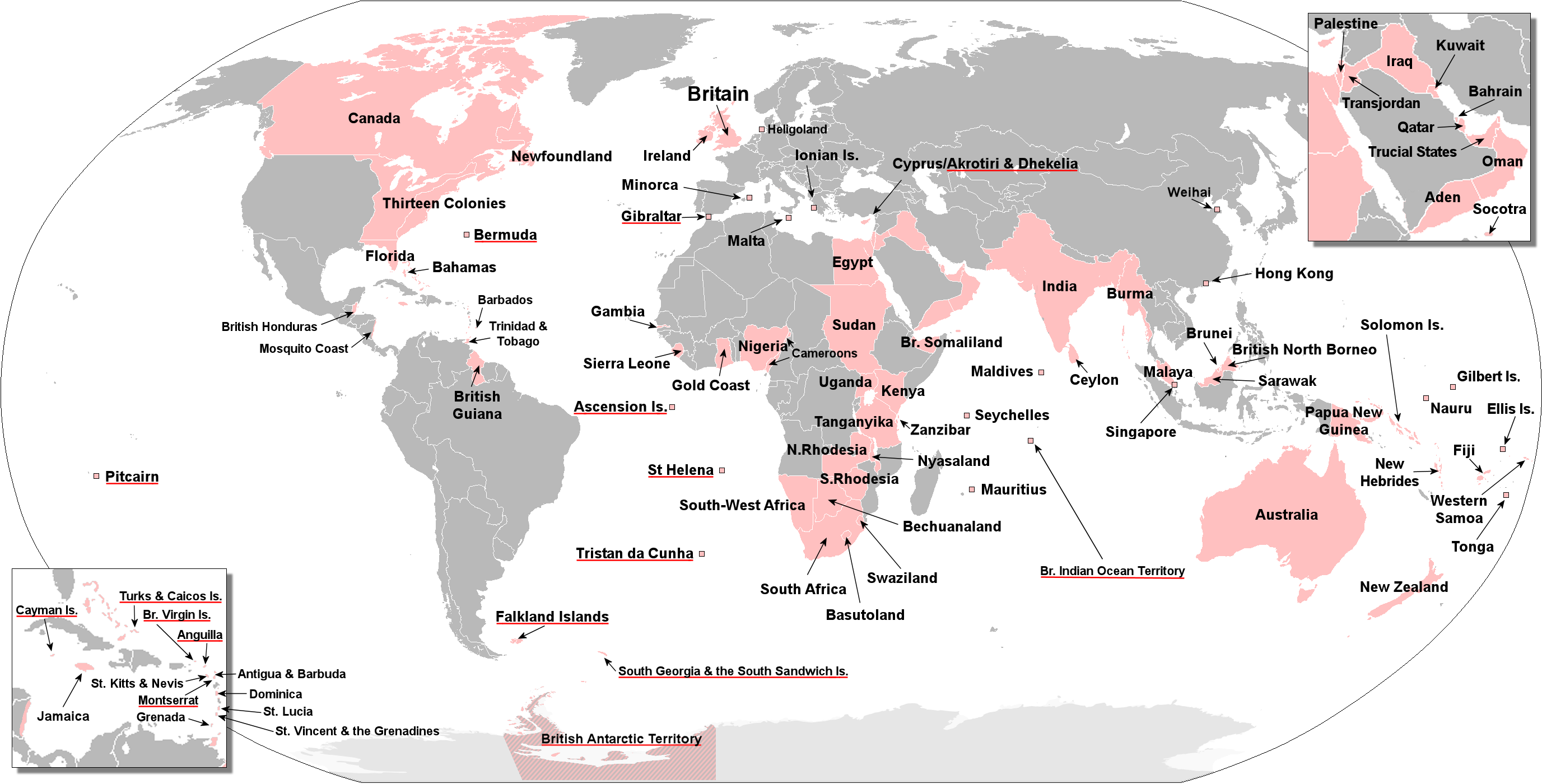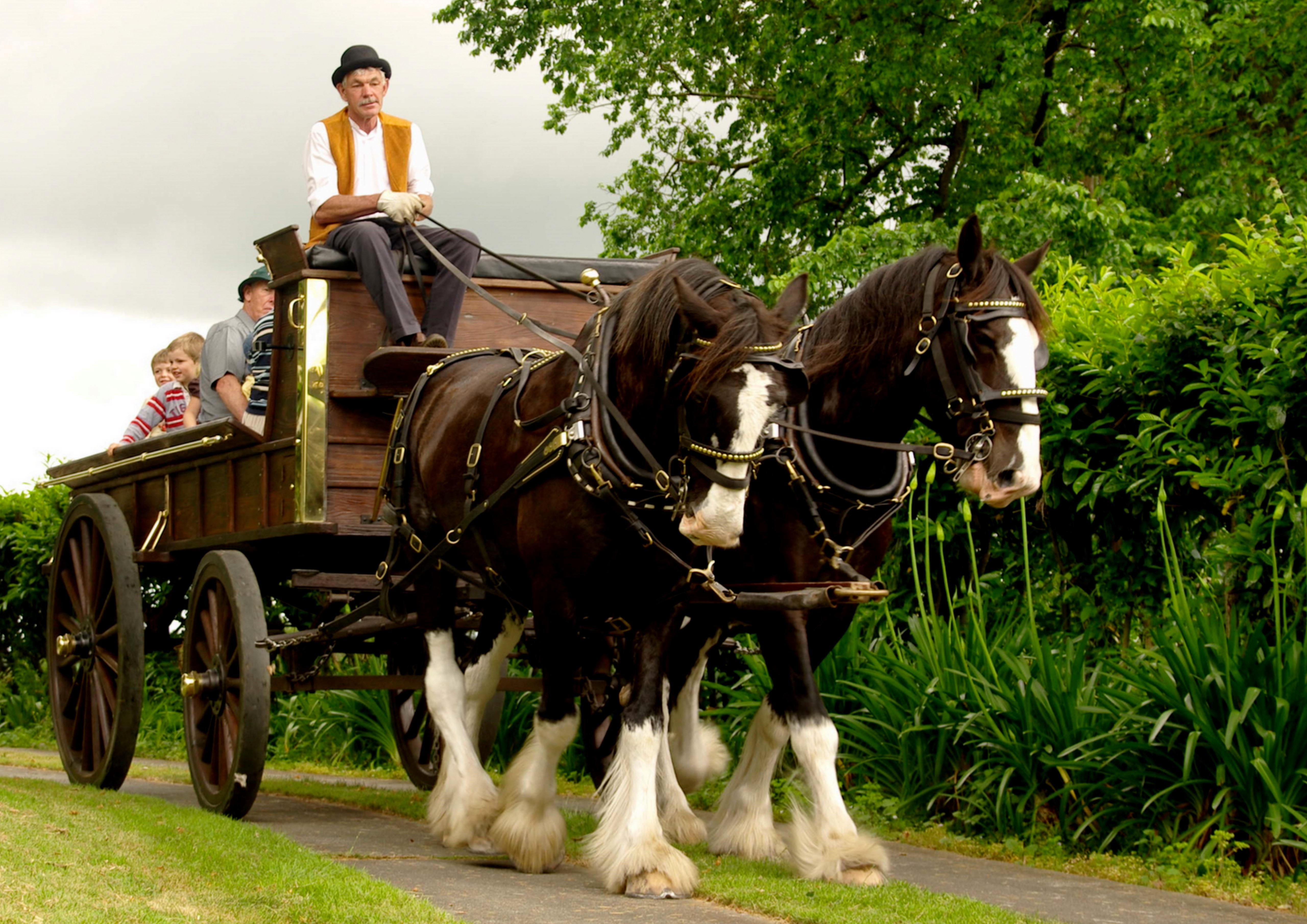|
Finnieston Crane
The Finnieston Crane or Stobcross Crane is a disused giant cantilever crane in the centre of Glasgow, Scotland. It is no longer operational, but is retained as a symbol of the city's engineering heritage. The crane was used for loading cargo, in particular steam locomotives, onto ships to be exported around the world. It is one of four such cranes on the River Clyde, a fifth one having been demolished in 2007, and one of only eleven giant cantilever cranes remaining worldwide. History The first crane to be called 'Finnieston Crane' was moved from a site opposite York Street to Finnieston Quay in 1848. It was tested with a load of 30 tons of pig-iron and ready for use at the end of April of that year. A newspaper report mentions the crane would be entirely used for lifting machinery on board steam-vessels. Queens Dock was opened in August 1877 as a dock for exporting goods from the centre of Glasgow. A steam crane was constructed west of the current one in the 1890s, unti ... [...More Info...] [...Related Items...] OR: [Wikipedia] [Google] [Baidu] |
George Wyllie
George Ralston Wyllie MBE (31 December 1921 – 15 May 2012) was a Scottish artist. Wyllie produced a number of notable public works, such as the Straw Locomotive and the Paper Boat. Life Wyllie was born in Shettleston, in the east end of Glasgow, and grew up in Craigton, in the south-west of the city. He was educated at Bellahouston Academy and Allan Glen's School. He later resided in Gourock. He worked as a customs officer before taking up art. He described himself as a "scul?tor". Wyllie's ''Straw Locomotive'' consisted of a full size steam locomotive, constructed from straw, and suspended from the Finnieston Crane, by the River Clyde in Glasgow. The sculpture was built at the former locomotive works at Springburn, and suspended from the crane for several months during 1987, before being taken back to the Springburn site and ceremonially burnt. The 80-foot ''Paper Boat'' was exhibited at The Tramway in Glasgow and at other sites including a placement on the Hudson Riv ... [...More Info...] [...Related Items...] OR: [Wikipedia] [Google] [Baidu] |
BBC Pacific Quay
BBC Pacific Quay is BBC Scotland's television and radio studio complex at Pacific Quay, Glasgow, Scotland. Opened by then Prime Minister Gordon Brown on 20 September 2007, the studios are home to BBC Scotland's television, radio and online services and the headquarters of the BBC in Scotland. Location The studios are located adjacent to the Glasgow Science Centre, across the river from the Scottish Exhibition and Conference Centre and adjacent to the studios of commercial broadcaster STV. The new building is one of the most modern digital broadcasting facilities in the world, complete with the BBC's first HD-capable newsroom. Functioning Television studio facilities based at BBC Pacific Quay were rebranded as "Street @ BBC Scotland" in 2018. There are three main television studios based at BBC Pacific Quay: * Studio A is the largest television studio at the complex, with of studio floor space. It can easily accommodate studio audiences of up to 320. * Studio B is the small ... [...More Info...] [...Related Items...] OR: [Wikipedia] [Google] [Baidu] |
Reporting Scotland
''BBC Reporting Scotland'' is the BBC's national television news programme for Scotland, broadcast on BBC One Scotland from the headquarters of BBC Scotland at Pacific Quay in Glasgow. History Although BBC Television was established in Scotland since February 1952 - and broadcast some opt-out programming - it did not start its daily Scottish television news service until Friday 30 August 1957, initially consisting of a five-minute bulletin at 6.05pm on weekdays and a sports results programme on Saturdays. The BBC was keen to launch the ''Scottish News Summary'' ahead of its new commercial rival in the central belt, Scottish Television (STV) and before the launch of similar bulletins elsewhere in the UK. As it turned out, STV began broadcasting the day after the launch of what was the BBC's first opt-out TV news bulletin, with the commercial rival launching its local bulletins the following Monday. Similar five-minute bulletins were introduced to the rest of the UK the followi ... [...More Info...] [...Related Items...] OR: [Wikipedia] [Google] [Baidu] |
Fairfield Titan
The Fairfield Titan was a giant cantilever crane at BAE Systems' Govan shipyard, and the largest such crane on the River Clyde The River Clyde ( gd, Abhainn Chluaidh, , sco, Clyde Watter, or ) is a river that flows into the Firth of Clyde in Scotland. It is the ninth-longest river in the United Kingdom, and the third-longest in Scotland. It runs through the major cit ... until it was demolished in 2007. History The crane was built by Sir William Arrol & Co. at the Fairfield Shipbuilding and Engineering Company yard in 1911, and was first used to install machinery in ''HMS New Zealand (1911)''. The Titan was last used six weeks before its demolition, assembling a Type 45 destroyer. Despite being Listed building, category A listed, permission was granted for its removal as it was hindering development of the yard, and it was dismantled over a period of three weeks and recycled. The crane features in the song ''Shipyard Apprentice'' by Scottish traditional music group Batt ... [...More Info...] [...Related Items...] OR: [Wikipedia] [Google] [Baidu] |
Clyde Auditorium
The SEC Armadillo (originally known as the Clyde Auditorium) is an auditorium located near the River Clyde, in Glasgow, Scotland. It is one of three venues on the Scottish Event Campus, which includes the SEC Centre and the OVO Hydro. ''www.whatsonglasgow.co.uk''. Retrieved 14 October 2021. History Plans for a new building to increase the capacity of the SECC complex were initiated in 1994. Designed by architects , construction of the 3,000 seat venue started in September 1995, and was completed in August 1997, by which time it had earned its affectionate nickname, due to the similarity of its shape to that of the[...More Info...] [...Related Items...] OR: [Wikipedia] [Google] [Baidu] |
Scottish Exhibition And Conference Centre
The SEC Centre (originally known as the Scottish Exhibition and Conference Centre until 2017) is Scotland's largest exhibition centre, located in Glasgow, Scotland. It is one of the three main venues within the Scottish Event Campus. Since the opening of the original buildings in 1985, the complex has undergone two major expansions; the first being the SEC Armadillo in 1997, and then the OVO Hydro in 2013. The venue's holding company SEC Limited, is 91% owned by Glasgow City Council and 9% owned by private investors. It is probably best known for hosting concerts, particularly in Hall 4 and Hall 3. Development history The Scottish Development Agency first supported the construction of an exhibition centre in Glasgow in 1979. A site at the former Queen's Dock on the north bank of the Clyde at Finnieston, which had closed to navigation in 1969, was selected. Land reclamation wo ... [...More Info...] [...Related Items...] OR: [Wikipedia] [Google] [Baidu] |
Glasgow Harbour Tunnel Rotundas
The Glasgow Harbour Tunnel Rotundas are two red brick stone rotundas which flank the River Clyde in Glasgow, Scotland. The North Rotunda is located on Tunnel Street in the Finnieston area of Glasgow with the South Rotunda at Plantation Place in Govan. History Designed by Simpson and Wilson, and built between 1890 and 1896 by Glasgow Tunnel Company, the Rotunda covered shafts to tunnels which enabled vehicular and pedestrian access to the other side of the river. Pedestrians, horses and carts – and later motor vehicles – would be hauled up by hydraulic lifts provided by Otis Elevator Company of New York. During the Second World War, the tunnels were temporarily closed because all the metal from the lifts was removed to contribute to the war effort. The tunnels were an expensive venture to run and were passed to the council to run as a service in 1926. The increased costs of running the tunnels which were prone to damp and the increase of motor cars on the roads lead to t ... [...More Info...] [...Related Items...] OR: [Wikipedia] [Google] [Baidu] |
Cantilever
A cantilever is a rigid structural element that extends horizontally and is supported at only one end. Typically it extends from a flat vertical surface such as a wall, to which it must be firmly attached. Like other structural elements, a cantilever can be formed as a beam, plate, truss, or slab. When subjected to a structural load at its far, unsupported end, the cantilever carries the load to the support where it applies a shear stress and a bending moment. Cantilever construction allows overhanging structures without additional support. In bridges, towers, and buildings Cantilevers are widely found in construction, notably in cantilever bridges and balconies (see corbel). In cantilever bridges, the cantilevers are usually built as pairs, with each cantilever used to support one end of a central section. The Forth Bridge in Scotland is an example of a cantilever truss bridge. A cantilever in a traditionally timber framed building is called a jetty or forebay. In t ... [...More Info...] [...Related Items...] OR: [Wikipedia] [Google] [Baidu] |
British Empire
The British Empire was composed of the dominions, colonies, protectorates, mandates, and other territories ruled or administered by the United Kingdom and its predecessor states. It began with the overseas possessions and trading posts established by England between the late 16th and early 18th centuries. At its height it was the largest empire in history and, for over a century, was the foremost global power. By 1913, the British Empire held sway over 412 million people, of the world population at the time, and by 1920, it covered , of the Earth's total land area. As a result, its constitutional, legal, linguistic, and cultural legacy is widespread. At the peak of its power, it was described as " the empire on which the sun never sets", as the Sun was always shining on at least one of its territories. During the Age of Discovery in the 15th and 16th centuries, Portugal and Spain pioneered European exploration of the globe, and in the process established ... [...More Info...] [...Related Items...] OR: [Wikipedia] [Google] [Baidu] |
Clydesdale Horse
The Clydesdale is a Scottish horse breed, breed of draught horse. It is named for its area of origin, the Clydesdale (district), Clydesdale or valley of the River Clyde, much of which is within the county of Lanarkshire. The origins of the breed lie in the eighteenth century, when Flemish Horse, Flemish stallions were imported to Scotland and mated with local mares; in the nineteenth century, Shire (horse), Shire blood was introduced. The first recorded use of the name "Clydesdale" for the breed was in 1826; the horses spread through much of Scotland and into northern England. After the breed society was formed in 1877, thousands of Clydesdales were exported to many countries of the world, particularly to Australia and New Zealand. In the early twentieth century numbers began to fall, both because many were taken for use in the First World War, and because of the increasing mechanisation of agriculture. By the 1970s, the Rare Breeds Survival Trust considered the breed vulnerabl ... [...More Info...] [...Related Items...] OR: [Wikipedia] [Google] [Baidu] |
Tank
A tank is an armoured fighting vehicle intended as a primary offensive weapon in front-line ground combat. Tank designs are a balance of heavy firepower, strong armour, and good battlefield mobility provided by tracks and a powerful engine; usually their main armament is mounted in a turret. They are a mainstay of modern 20th and 21st century ground forces and a key part of combined arms combat. Modern tanks are versatile mobile land weapons platforms whose main armament is a large- caliber tank gun mounted in a rotating gun turret, supplemented by machine guns or other ranged weapons such as anti-tank guided missiles or rocket launchers. They have heavy vehicle armour which provides protection for the crew, the vehicle's munition storage, fuel tank and propulsion systems. The use of tracks rather than wheels provides improved operational mobility which allows the tank to overcome rugged terrain and adverse conditions such as mud and ice/snow better than wheel ... [...More Info...] [...Related Items...] OR: [Wikipedia] [Google] [Baidu] |






